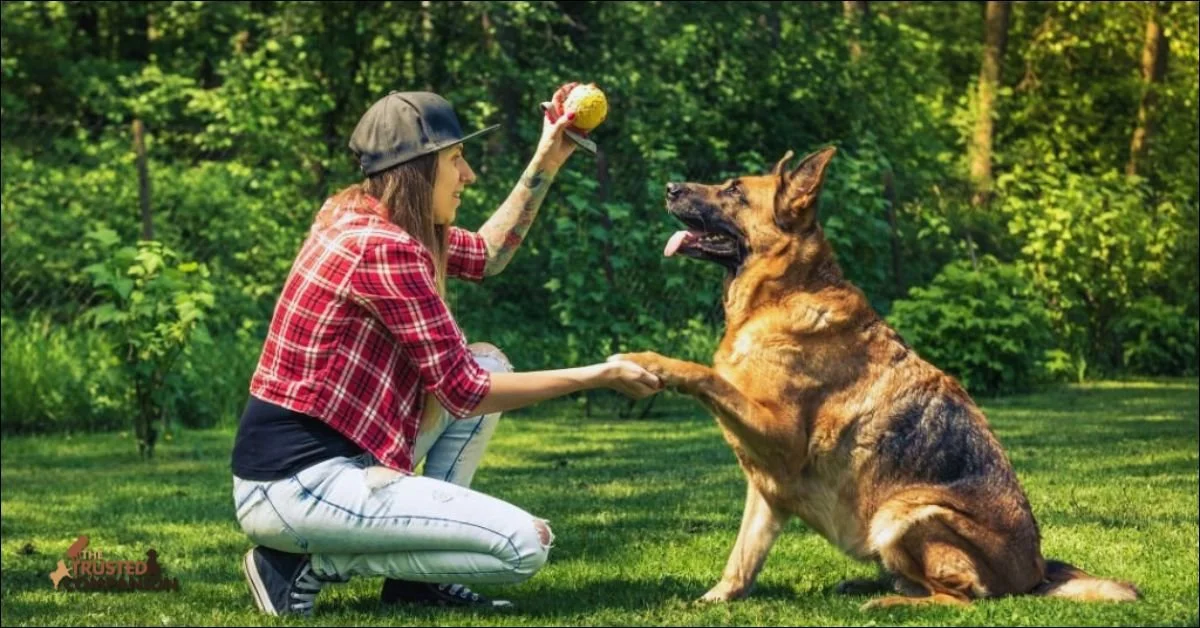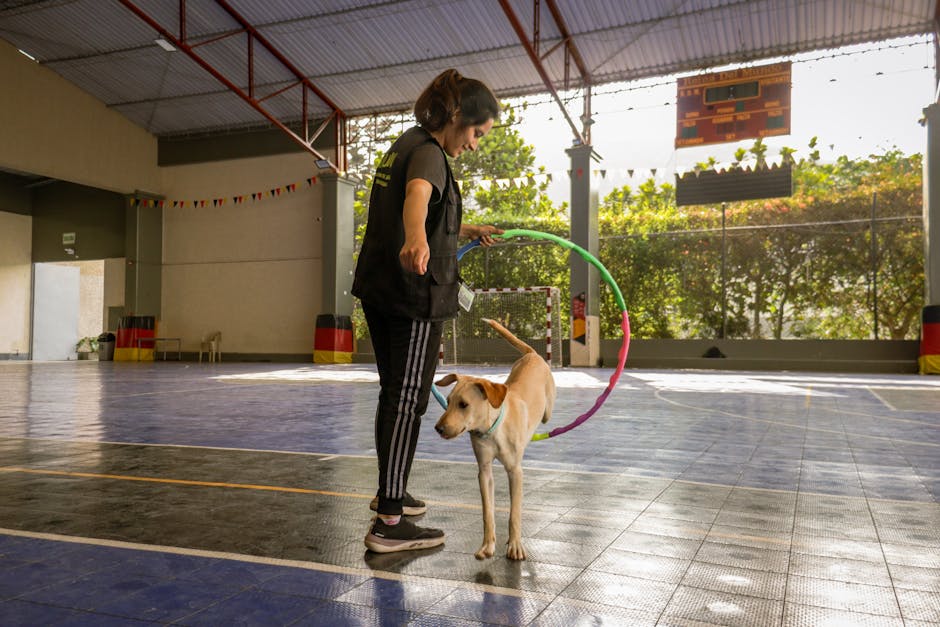Have you ever wondered what basic obedience dog training really teaches your furry friend? It’s more than just “sit” and “stay.” This kind of training builds a foundation that shapes your dog’s behavior, making life easier and more enjoyable for both of you.
Imagine having a dog that listens, responds quickly, and behaves well around others. That’s exactly what basic obedience training can do for your relationship. Keep reading to discover the key lessons your dog will learn and how they can transform your daily routine together.
Core Commands
Basic obedience dog training is pivotal in nurturing a well-behaved companion. Core commands form the foundation of this training, equipping your dog with essential skills that make everyday interactions smoother and more enjoyable. These commands are not just about discipline; they enhance your dog’s safety and your peace of mind. Let’s dive into these core commands that every dog should master.
Sit And Stay
The “Sit” command is often the first step in establishing control. Teaching your dog to sit on command is crucial during moments of excitement or distraction. It’s a simple yet effective way to encourage calmness. Pairing it with “Stay” ensures your dog remains in place, helping prevent unwanted chasing or jumping.
Come When Called
“Come” is one of the most vital commands for your dog’s safety. Imagine your dog wandering off in a park; a reliable recall can prevent potential danger. Practice this command in various environments to ensure responsiveness. Rewarding your dog when they come back reinforces the behavior, making outings stress-free.
Heel And Walk
The “Heel” command ensures your dog walks beside you rather than pulling ahead. This command is essential for enjoyable walks without the constant struggle against a leash. It fosters a stronger bond with your pet as you explore your neighborhood. Walking in sync with your dog transforms mundane walks into a delightful experience.
Down And Leave It
Teaching “Down” encourages your dog to lie down on command, promoting relaxation and patience. It’s particularly useful during gatherings or when visitors arrive. The “Leave It” command is crucial for preventing your dog from picking up harmful objects. This command safeguards your pet and instills discipline when faced with temptations.

Credit: in.pinterest.com
Leash Manners
Leash manners are a crucial part of basic obedience dog training. Teaching your dog how to behave on a leash makes walks more enjoyable for both of you. It also keeps your dog safe and helps prevent frustrating tugging or sudden lunges.
Loose Leash Walking
Loose leash walking means your dog walks calmly beside you without pulling. It’s not just about control; it’s about communication and trust. When your dog walks on a loose leash, it shows they understand your pace and direction.
Try stopping every time your dog starts to pull. Wait patiently until the leash slackens, then continue walking. This simple action teaches your dog that pulling doesn’t get them where they want to go faster.
Have you noticed how your dog reacts when you change speed or direction? Use that to keep their attention and reinforce walking calmly by your side. It turns your walk into a shared experience, not a tug of war.
Preventing Pulling
Pulling can cause discomfort and strain for both you and your dog. To prevent it, use consistent cues like a verbal “easy” or gentle leash corrections. Timing is key—correct the pull as it happens to make the connection clear.
Reward your dog immediately when they stop pulling and walk nicely next to you. Treats, praise, or a quick play session can motivate them to repeat good behavior. Think about what motivates your dog most and use it as a powerful reward.
Have you ever wondered why dogs pull in the first place? Often, it’s excitement or a desire to explore. Addressing these feelings with regular exercise and mental stimulation reduces the urge to pull during walks.
Social Skills
Social skills are a crucial part of basic obedience dog training. They help your dog behave well around people and other dogs. Building these skills early makes walks and visits more enjoyable for both of you.
Greeting People
Teaching your dog how to greet people calmly is essential. Instead of jumping or barking, your dog learns to stay relaxed and polite. You can practice by asking visitors to ignore your dog until it sits quietly.
Have you noticed how a calm greeting can change your dog’s first impression? It helps others feel safe and comfortable. This also reduces stress for your dog in new situations.
Interacting With Other Dogs
Basic obedience teaches your dog to approach other dogs politely. It learns to read body language and respond appropriately. This prevents unwanted aggression or fear-based reactions.
Try controlled playdates or supervised walks to practice these skills. Notice how your dog’s confidence grows as it understands the right way to engage with peers. What changes when your dog feels secure around others?
Impulse Control
Impulse control is a crucial part of basic obedience dog training. It teaches your dog to pause and think before acting, which helps in managing their behavior in everyday situations. Developing impulse control not only makes your dog safer but also strengthens the bond between you and your pet.
Waiting For Food
Teaching your dog to wait before eating is a simple yet powerful exercise in impulse control. Instead of letting your dog dive into their bowl, you ask them to sit patiently until you give the signal to start. This small act builds self-discipline and shows your dog that calm behavior leads to rewards.
Try this: Place your dog’s food bowl on the floor but hold your hand over it. Only lift your hand when your dog remains calm and still. If they jump or bark, cover the bowl again and wait. This practice slows down their excitement and helps them learn patience.
Ignoring Distractions
Impulse control also means teaching your dog to focus on you, even when there are tempting distractions nearby. Imagine walking in a park full of squirrels and other dogs, yet your dog stays attentive and controlled. That kind of focus is possible with training.
Start by practicing in a quiet area, then gradually add distractions like toys or noises. Reward your dog for maintaining attention and ignoring the distractions. This skill keeps your dog safe and responsive, especially in busy or unpredictable environments.
Household Rules
Household rules are key in basic obedience training for dogs. They create a safe and peaceful home for everyone. Teaching these rules helps your dog understand what is allowed. It builds good manners and reduces stress. Dogs learn to live happily with family members and guests.
No Jumping On Furniture
Many dogs love to jump on sofas or beds. Basic training teaches them to stay off furniture unless invited. This keeps your furniture clean and damage-free. It also prevents accidents or scratches. Dogs learn to wait patiently on the floor or a dog bed.
Consistency is important. Use clear commands like “off” or “down.” Reward your dog with treats when they follow the rule. This helps them link good behavior with positive results.
Respecting Personal Space
Respecting personal space means your dog does not crowd people. Dogs learn to avoid jumping on laps or pushing into small areas. This makes interactions calm and safe for everyone.
Training helps dogs understand when to approach and when to back away. It reduces anxiety in guests or family members. Your dog becomes polite and well-mannered in the home environment.

Credit: www.facebook.com
Communication Basics
Understanding communication basics is key to successful dog training. It’s not just about giving commands; it’s about building a two-way connection. When you learn to read your dog’s signals and respond clearly, training becomes smoother and more effective.
Reading Body Language
Your dog talks with their body more than their bark. Watch for tail position, ear movement, and eye contact to know what they feel. A wagging tail doesn’t always mean happiness—it could signal excitement or nervousness.
Notice if your dog leans in or pulls away during training. These clues tell you if they’re comfortable or stressed. I once missed signs of discomfort in my dog’s stance, which made training harder until I adjusted my approach.
Try observing your dog’s posture during different commands. Is their body relaxed or tense? This helps you spot confusion or readiness to learn, guiding how you proceed next.
Responding To Signals
When your dog sends a signal, your response shapes their behavior. If they back away, don’t force the issue; instead, give them space and try a gentler approach. This builds trust and encourages cooperation.
Use consistent, clear signals yourself. Dogs respond well to simple gestures paired with words. For example, a hand raised palm-out can mean “stop,” which your dog learns faster than complex commands.
Think about how your tone and body language affect your dog’s response. Calm and confident energy invites focus, while frustration can confuse or scare them. Have you noticed how your mood changes your dog’s attitude during training?

Credit: www.thetrustedcompanion.com
Frequently Asked Questions
What Commands Does Basic Obedience Dog Training Include?
Basic obedience training teaches essential commands like sit, stay, come, down, and heel. These commands help manage your dog’s behavior effectively and ensure safety in various situations.
How Long Does Basic Obedience Training Usually Take?
Training duration varies, but most dogs learn basic commands within 4 to 8 weeks. Consistent daily practice and positive reinforcement speed up the learning process.
Why Is Basic Obedience Training Important For Dogs?
It builds clear communication between you and your dog. This training ensures good behavior, safety, and a stronger bond with your pet.
Can Basic Obedience Training Prevent Behavioral Problems?
Yes, it helps reduce issues like excessive barking, jumping, and pulling on the leash. Early training encourages good habits and social skills.
Conclusion
Basic obedience dog training builds a strong bond between you and your dog. It teaches your dog to listen and follow simple commands. This helps keep your dog safe and well-behaved. Training also makes daily life easier and more enjoyable.
Dogs feel more confident and happy with clear rules. Consistent practice leads to better behavior over time. Start early, be patient, and stay positive. A well-trained dog is a happy companion for years to come.







